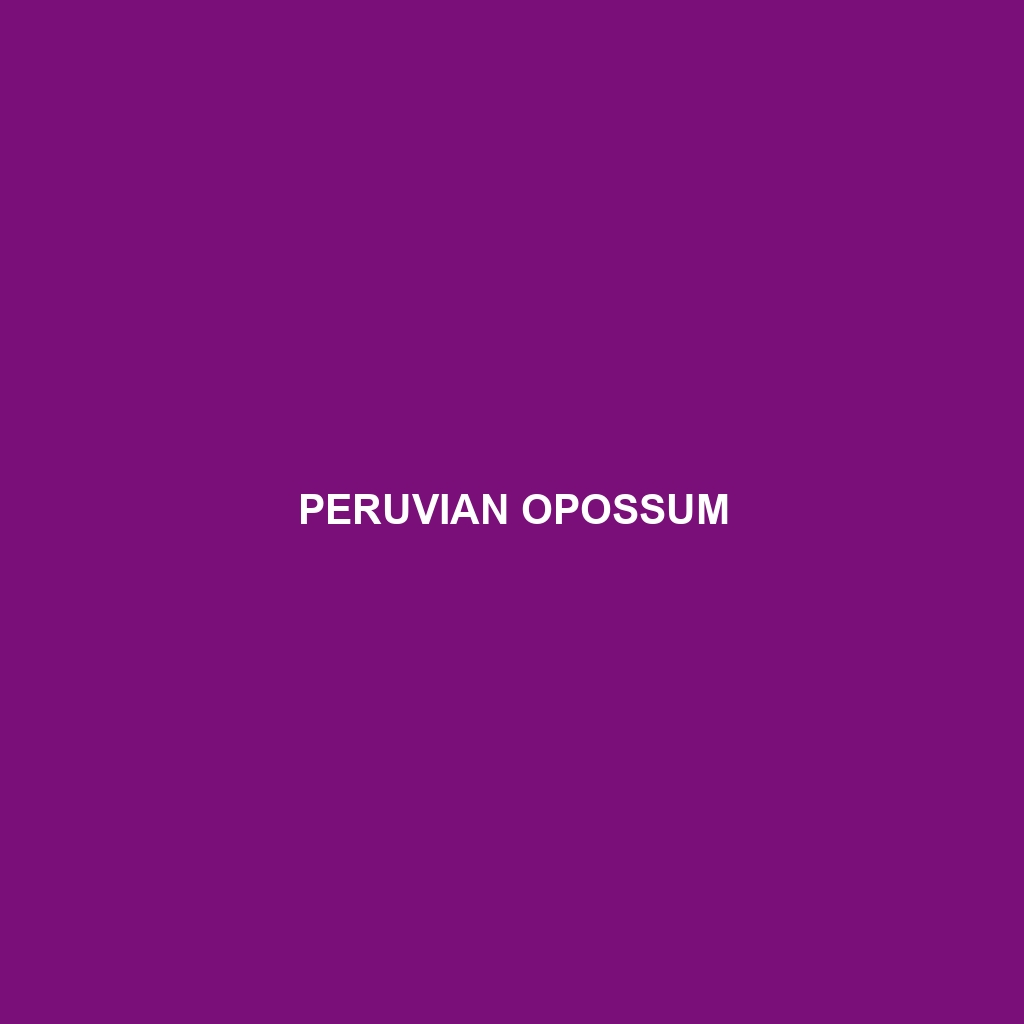Peruvian Opossum: Nature’s Agile Arborealist
The Peruvian Opossum (Thylamys elegans) is a small, nocturnal marsupial native to the diverse landscapes of Peru. Known for its agile climbing abilities and adaptable nature, this intriguing species thrives in a variety of habitats. Characterized by its distinctive coloration and unique physical features, the Peruvian Opossum plays a vital role in its ecosystem. Here, we delve into the detailed attributes of this fascinating creature.
Physical Characteristics
Size: The Peruvian Opossum is relatively small, with a body length ranging from 10 to 15 centimeters (4 to 6 inches), not including the tail, which adds another 9 to 14 centimeters (3.5 to 5.5 inches). These marsupials typically weigh between 50 to 80 grams (1.8 to 2.8 ounces).
Coloration: Their fur is predominantly grayish-brown on the dorsal side, providing excellent camouflage in their natural habitat. The ventral side is lighter, often white or cream-colored. Facial markings include dark rings around the eyes, giving them a masked appearance, complemented by a pointed snout.
Special Features: Peruvian Opossums possess prehensile tails, which are notably strong and flexible, aiding in their arboreal lifestyle. Their opposable thumbs and sharp claws enhance their climbing prowess, allowing them to navigate through trees with ease.
Behaviors
Social Interactions: These opossums are solitary animals, primarily interacting with others during the breeding season. They are nocturnal, spending their nights foraging and their days resting in nests made of leaves and other plant materials.
Feeding Habits: As omnivores, Peruvian Opossums have a varied diet that includes fruits, insects, small vertebrates, and occasionally eggs. Their opportunistic feeding behavior allows them to adapt to the availability of food sources in their environment.
Ecological Roles: They play a crucial role in their ecosystem as both predator and prey. By consuming a wide range of insects and small animals, they help control pest populations. Additionally, their consumption of fruits aids in seed dispersal, contributing to plant biodiversity.
Habitat
Natural Habitat: The Peruvian Opossum inhabits a range of environments, from lowland tropical forests to montane regions. They are often found in areas with dense vegetation, which provides ample cover and climbing structures.
Adaptations: Adaptability is a key trait of the Peruvian Opossum. Their prehensile tail and dexterous limbs enable them to thrive in arboreal settings, while their nocturnal habits reduce competition for food and predation risks. Their varied diet allows them to survive in different ecological niches.
Conservation Status
Current Status: The Peruvian Opossum is not currently listed as endangered or threatened. However, habitat destruction and fragmentation pose potential threats to their populations. Conservation efforts focus on protecting their natural habitats and ensuring sustainable land use practices.
Fun Facts
Marsupial Traits: Like other marsupials, female Peruvian Opossums have a pouch where they carry and nurse their young until they are mature enough to survive on their own.
Tail Usage: Their tails are not only used for climbing but also for carrying nesting materials, showcasing their resourcefulness.
Diverse Diet: Their willingness to eat a wide range of foods means they can thrive in various environments, making them highly adaptable and resilient.
The Peruvian Opossum is a remarkable example of nature’s ingenuity, blending unique physical traits and behaviors to thrive in its environment. By understanding and appreciating these attributes, we can better appreciate the vital role they play in maintaining ecological balance and the importance of preserving their habitats.
